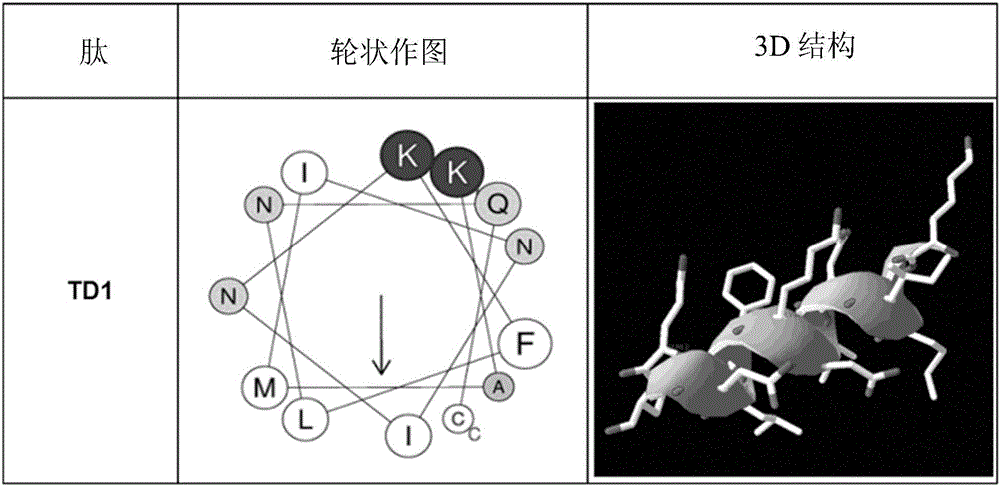Novel cell penetrating peptide, conjugate thereof with botulinum toxin, and use thereof
A botulinum toxin, penetrating peptide technology, applied in the direction of fusion with toxin, bacterial antigen components, medical preparations with non-active ingredients, etc., to achieve the effect of avoiding toxic effects
- Summary
- Abstract
- Description
- Claims
- Application Information
AI Technical Summary
Problems solved by technology
Method used
Image
Examples
Embodiment 1
[0123] Example 1. Construction of novel cell penetrating peptides
[0124] Development of novel skin-penetrating and cell-penetrating peptides capable of transdermal delivery of the light chain of botulinum toxin. First, the structure and function of the heavy and light chains of botulinum toxin are analyzed, and sequences are selected based on the fact that the heavy chain plays an important role in the penetration of botulinum toxin type A into nerve cells. Moreover, compared with the conventional MTD sequence, a novel cell-penetrating peptide consisting of the amino acid sequence of SEQ ID NO: 1 is designed by increasing the accessibility of the cell membrane by setting amphipathic polar amino acids, improving Physical properties and solubility and by adding non-polar amino acids to provide suitable hydrophobicity for the cell membrane penetration. The cell-penetrating peptide designed according to the above description was named TD1, and its properties and structure were ...
Embodiment 2
[0125] Example 2. Demonstration of the in vitro cell penetrating potential of the cell penetrating peptide TD1 using flow cytometric analysis
[0126] Experiments were conducted using flow cytometry analysis to confirm the penetration potential of the novel cell-penetrating peptide TD1 constructed according to Example 1 against skin cells and nerve cells. In order to compare the cell penetrating properties of the cell penetrating peptide TD1, a previously developed cell penetrating peptide, kFGF4, and a representative protein translocation domain (PTD), HIV-Tat, were used as a control MTD, and each peptide Samples were fluorescently labeled with FITC and synthesized by a professional organization for peptide synthesis (GL Biochem Ltd. (Shanghai, China)).
[0127] 2.1 Quantitative analysis of cell penetration potential in keratinocytes (HaCaT cells)
[0128]To confirm the cell penetration potential in keratinocyte HaCaT cells, HaCaT cells were cultured using DMEM complete medi...
Embodiment 3
[0136] Example 3. Demonstration of the in vitro cell penetrating potential of the cell penetrating peptide TD1 using confocal microscopy
[0137] 3-1. Quantitative analysis of cell penetration potential in keratinocytes (HaCaT cells)
[0138] To demonstrate the cell penetrating potential in HaCaT cells, which is a keratinocyte line, the cells were cultured using DMEM complete medium (10% FBS, 1% penicillin / streptomycin). For microscopy, 12 mm coverslips were flame sterilized, added to each well of a 24-well plate, and the HaCaT cells were seeded into the plate and incubated for 16 to 24 hours. Each sample (reference: Vehicle, comparative: HIV-Tat&kFGF4-derived peptide, test: TD1) was added to the cells in the FBS-free medium at 3 μM and 5 μM, respectively, and the Cells were incubated for 1 hour and 3 hours, respectively. After the reaction, the medium was completely removed by aspiration, the steps of adding PBS to the plate and gently shaking the plate were repeated to was...
PUM
 Login to View More
Login to View More Abstract
Description
Claims
Application Information
 Login to View More
Login to View More - R&D
- Intellectual Property
- Life Sciences
- Materials
- Tech Scout
- Unparalleled Data Quality
- Higher Quality Content
- 60% Fewer Hallucinations
Browse by: Latest US Patents, China's latest patents, Technical Efficacy Thesaurus, Application Domain, Technology Topic, Popular Technical Reports.
© 2025 PatSnap. All rights reserved.Legal|Privacy policy|Modern Slavery Act Transparency Statement|Sitemap|About US| Contact US: help@patsnap.com



